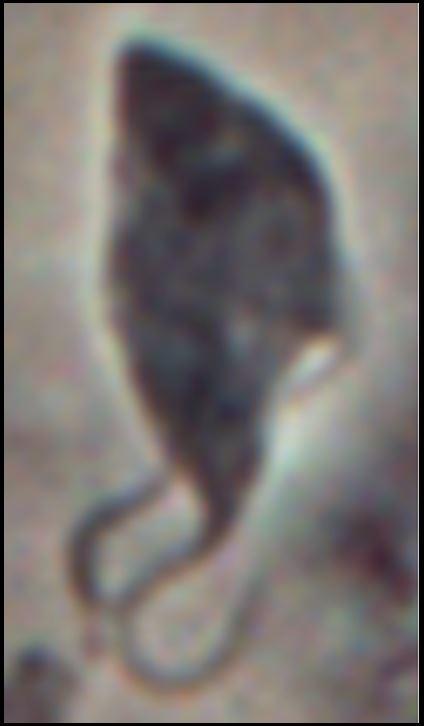
Credit: Dr Lori Peacock
Researchers at the University of Bristol have discovered how microbes responsible for human African sleeping sickness produce sex cells.
In these single-celled parasites, known as trypanosomes, each reproductive cell splits off in turn from the parental germline cell, which is responsible for passing on genes. Conventional germline cells divide twice to produce all four sex cells – or gametes – simultaneously. In humans four sperms are produced from a single germline cell. So, these strange parasite cells are doing their own thing rather than sticking to the biology rulebook.
Trypanosome cell biology has already revealed several curious features. They have two unique intracellular structures – the kinetoplast, a network of circular DNA and the glycosome, a membrane-enclosed organelle that contains the glycolytic enzymes. They don’t follow the central dogma that DNA is faithfully transcribed into RNA, but will go back and edit some of the RNA transcripts after they’ve been made.
Professor Wendy Gibson of the University of Bristol’s School of Biological Sciences led the study. She said “We’ve got used to trypanosomes doing things their own way, but of course what we think of as normal cell biology is based on very few so-called model organisms like yeast and mice. There’s a whole world of weird and wonderful single-celled organisms – protozoa – out there that we don’t know much about! Trypanosomes have got more attention because they’re such important pathogens – both of humans and their livestock.”
Biologists think that sexual reproduction evolved very early on, after the first complex cells appeared a couple of billion years ago. The sex cells are produced by a special form of cell division called meiosis that reduces the number of chromosomes by half, so that gametes have only one complete set of chromosomes instead of two. The chromosome sets from two gametes combine during sexual reproduction, producing new combinations of genes in the offspring. In the case of disease-causing microbes like the trypanosome, sex can potentially lead to a lot of harmful genes being combined in one strain. Thus, research on sexual reproduction helps scientists understand how new strains of disease-causing microbes arise and how characteristics such as drug resistance get spread between different strains.
###
The study, carried out by researchers from Bristol’s School of Biological Sciences and School of Veterinary Sciences in collaboration with the University of Cambridge, is published this week in Communications Biology.
Paper:
‘Sequential production of gametes during meiosis in trypanosomes ‘ by Lori Peacock, Chris Kay, Chloe Farren, Mick Bailey, Mark Carrington and Wendy Gibson published in Communications Biology.
Media Contact
Laura Thomas
[email protected]




